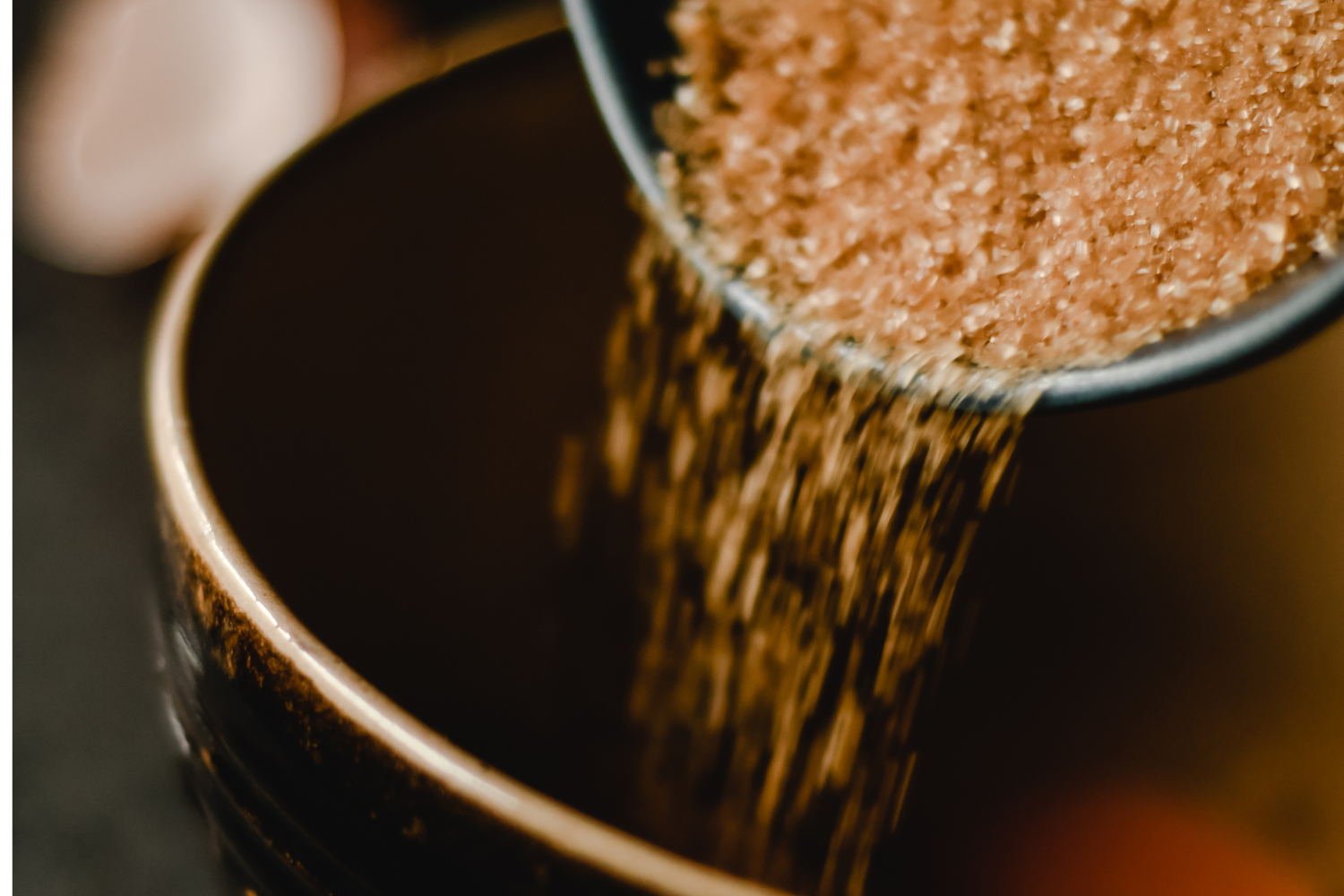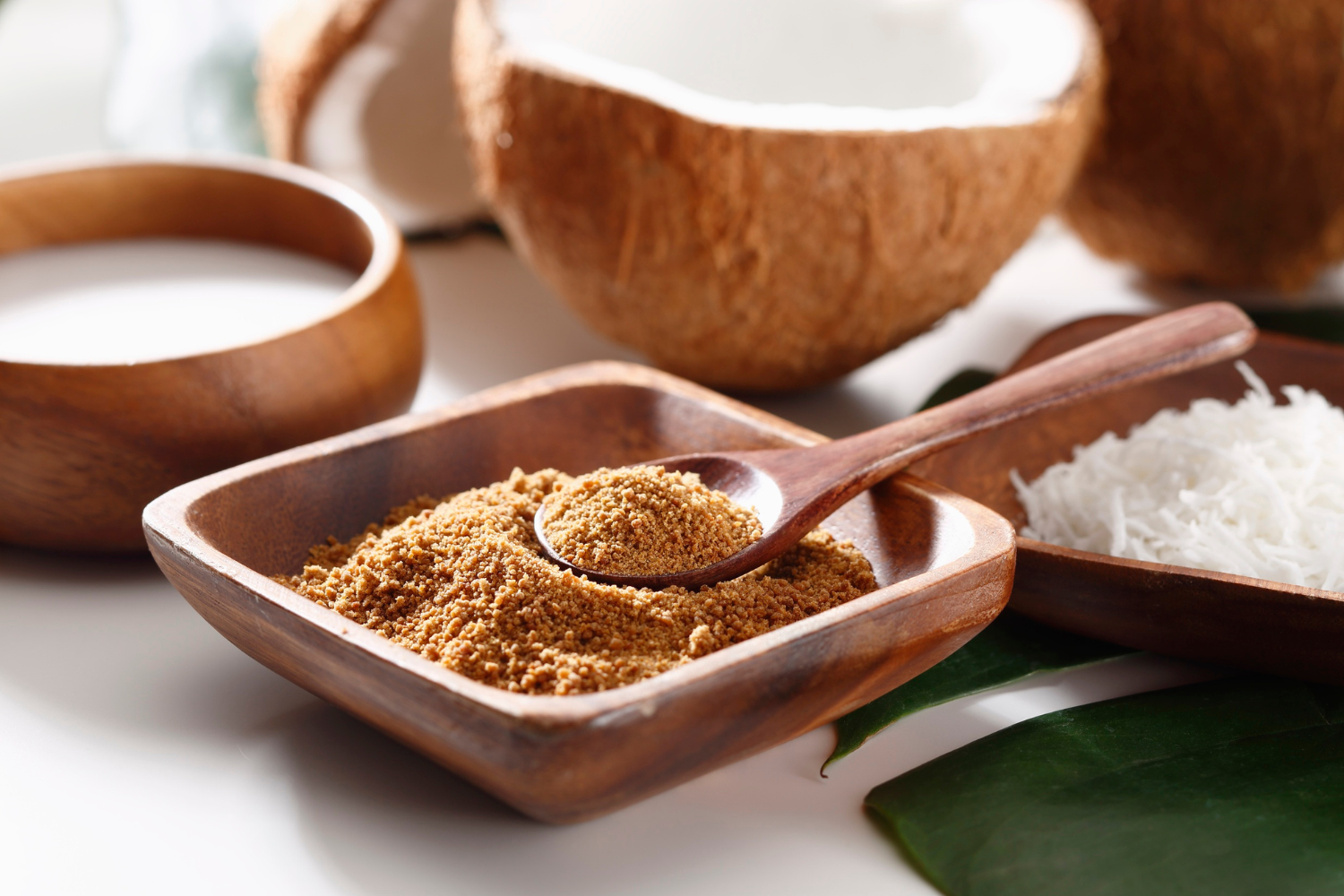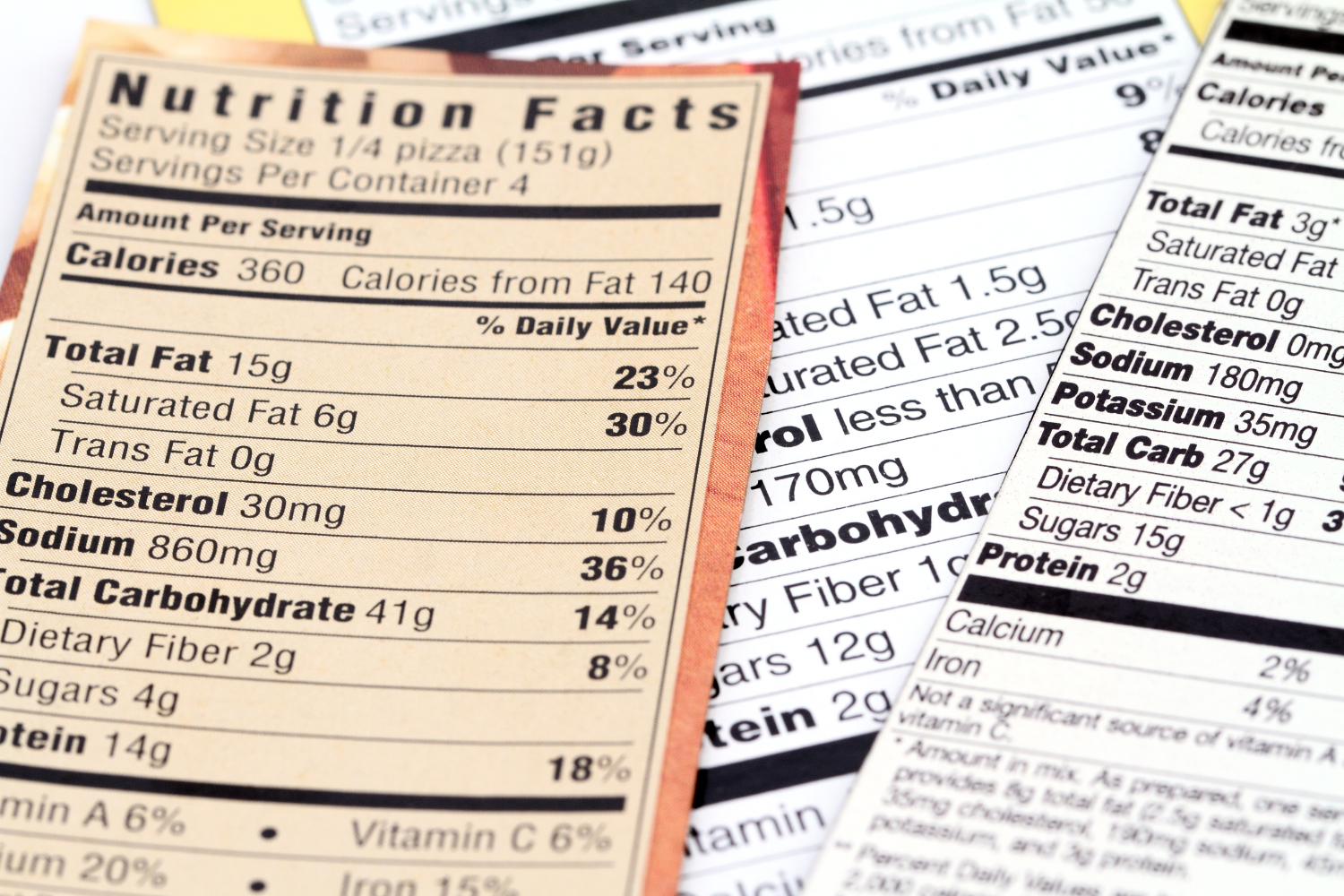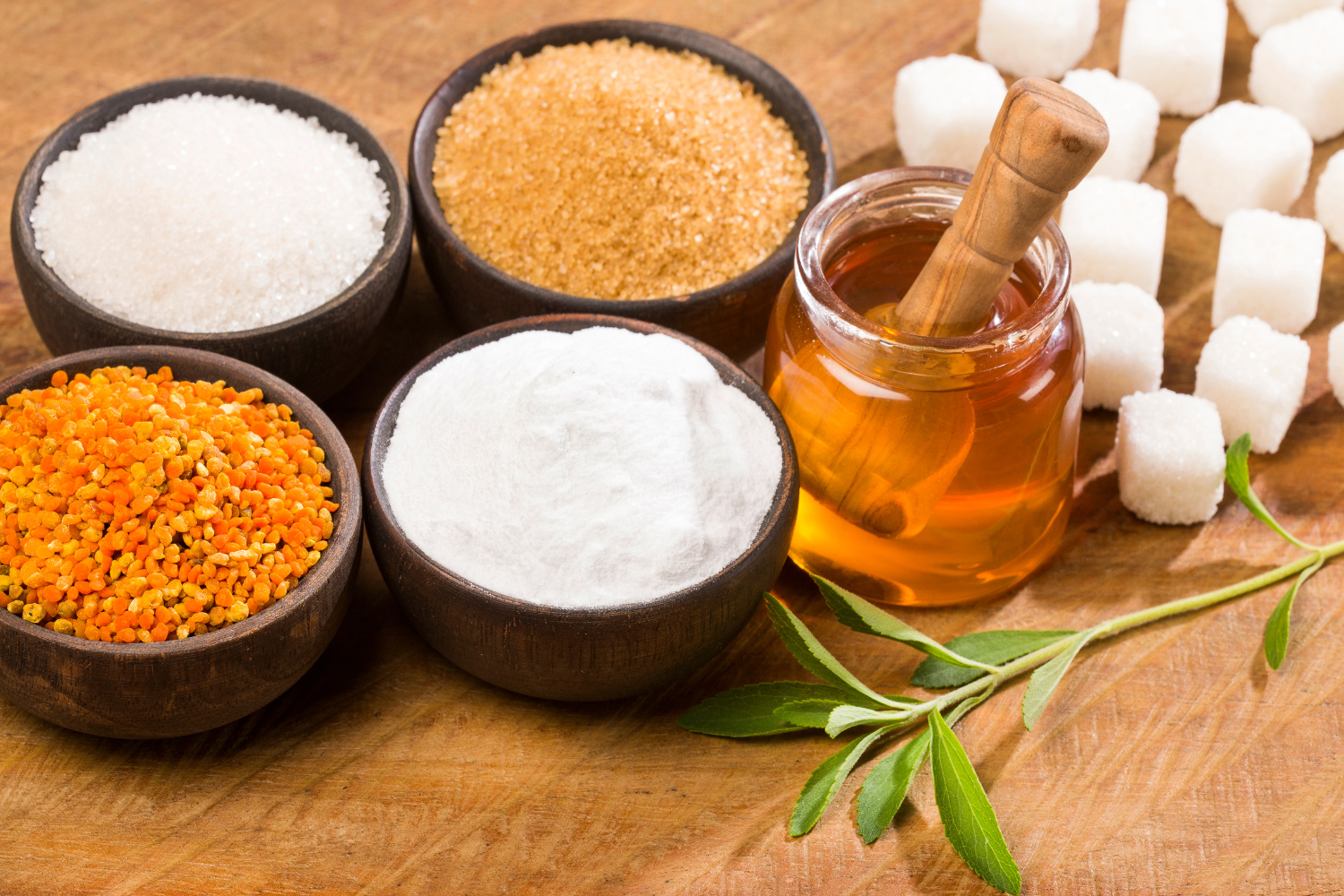Sweeteners significantly impact the taste, health benefits, and marketability of nutrition products. As consumers seek natural sugars and fewer processed foods, brands must choose sweeteners that align with health trends while maintaining product appeal. Options range from cane sugar and maple syrup to monk fruit sweeteners and other sugar alternatives, each with unique effects on blood sugar levels, calorie intake, and gut health.
Understanding how natural sweeteners compare to refined sugar, artificial sweeteners, and other sugar substitutes helps businesses develop products that meet consumer expectations. This guide explores different sweetener options and key factors to consider when selecting the right one.

Table of Contents
ToggleUnderstanding Natural Sweeteners
Natural sweeteners come from plant or animal sources and undergo minimal processing. They provide a sweet taste without the additives found in many sugar substitutes. As demand for natural sugars grows, brands are replacing refined sugar and high-intensity sweeteners with options that align with a healthy diet.
Examples of Natural Sweeteners:
- Honey – A natural sweetener with antioxidants and antimicrobial properties.
- Stevia – A zero-calorie sweetener extracted from the Stevia rebaudiana plant.
- Monk Fruit – A fruit-based sweetener often used in formulations that do not significantly impact blood sugar levels.
- Coconut Sugar – Made from coconut palm sap, containing small amounts of minerals.
Consumers are moving away from artificial sweeteners like aspartame and sucralose due to concerns over their long-term effects on human health. Natural alternatives provide a familiar sweet taste while reducing added sugar intake and minimizing processed food ingredients.
Natural vs. Artificial Sweeteners
Natural and artificial sweeteners differ in their source, processing, and perception. Understanding these differences helps brands make informed choices.
| Feature | Natural Sweeteners | Artificial Sweeteners |
|---|---|---|
| Source | Derived from plants/animals | Chemically synthesized |
| Processing | Minimal | Often highly processed |
| Perception | Considered healthier | Concerns over long-term effects |
| Examples | Stevia, honey, monk fruit | Aspartame, sucralose, saccharin |
Types of Natural Sweeteners and Their Benefits
Natural sweeteners vary in sweetness, nutritional properties, and how they affect blood glucose levels. Choosing the right option depends on a product’s nutritional goals and formulation needs.
Stevia
Stevia comes from the leaves of the Stevia rebaudiana plant and is often used as a zero-calorie sweetener. It is 200-300 times sweeter than table sugar and is popular for reducing added sugars.
Stevia is commonly used as a low-glycemic alternative, making it a potential option for those managing sugar intake. However, it can have a bitter taste, and some formulations may require blending with other sweeteners to improve flavor.
Monk Fruit (Luo Han Guo)
Monk fruit sweeteners are derived from a small fruit native to Southeast Asia. This zero-calorie sweetener is 150-200 times sweeter than cane sugar and is used in various nutrition products.
Monk fruit extract is often used as a low-glycemic sweetener and is known for its lack of a bitter aftertaste. However, it can be expensive and is often mixed with other sweeteners, such as erythritol, to improve texture and affordability.
Honey
Honey is a natural sweetener made by bees. It is slightly sweeter than granulated sugar. Honey contains natural compounds like antioxidants and antimicrobial properties, which contribute to its unique characteristics in nutrition products.
While honey is a better alternative to refined sugar, it is still high in natural sugars and can impact blood sugar levels. It is also not suitable for vegans, which may limit its use in plant-based products.
Coconut Sugar
Coconut sugar comes from the sap of coconut palm trees and has a sweetness level similar to table sugar. It contains small amounts of minerals and has a lower glycemic index than refined sugar.
Despite being marketed as a healthier alternative, coconut sugar is still high in fructose and does not significantly reduce calorie intake. It is less sweet than many sugar substitutes, which may affect formulation in nutrition products.
Agave Nectar
Agave nectar is extracted from the agave plant and is about 1.5 times sweeter than cane sugar. It blends well in beverages and has a lower glycemic index than table sugar, but its high fructose content should be considered in dietary choices.
However, agave nectar is high in fructose, which has been linked to metabolic issues and weight gain when consumed in excess. In terms of health concerns, its high fructose content makes it similar to high-fructose corn syrup.
Date Syrup
Date syrup is made by blending dates into a thick, natural sweetener. Its sweetness level is similar to honey’s; it contains fiber and antioxidant compounds, which may contribute to its nutritional profile beyond sweetness.
While date syrup has more nutrients than refined sugar, it is still high in sugar and can contribute to added sugar intake. Its thick texture may not be suitable for all product formulations, especially in frozen desserts and soft drinks.

Factors to Consider When Choosing a Natural Sweetener
Selecting the right natural sweetener depends on multiple factors, including how it interacts with other ingredients, consumer preferences, and cost. Understanding these elements helps brands create products that align with market demands while maintaining quality.
Product Type & Formulation Needs
Sweeteners behave differently depending on the product type. Heat-stable options like stevia and monk fruit work well in baked goods, while liquid sweeteners such as agave nectar or honey are better suited for beverages and soft drinks. The choice between liquid form and granulated sugar alternatives impacts formulation, texture, and shelf life.
Some sweeteners interact differently with other ingredients. Sugar alcohols, for example, can have a cooling effect in frozen desserts, while concentrated sweetness from monk fruit extract may require blending to balance flavor. Testing compatibility with other food additives ensures consistency in the final product.
Consumer Preferences & Market Trends
Demand for low-glycemic and zero-calorie sweeteners increases as consumers focus on reducing sugar intake. Monk fruit sweeteners, stevia, and other sugar substitutes appeal to those looking to manage blood glucose levels while maintaining a sweet taste.
Transparency in sourcing and sustainability also play key roles in purchasing decisions. Organic and non-GMO certifications enhance brand trust, while sustainably sourced options like coconut sugar or honey provide an added marketing advantage.
Health Benefits & Nutritional Profile
Some natural sweeteners offer nutritional benefits beyond sweetness. Honey and coconut sugar contain antioxidants and small amounts of minerals, while date syrup provides fiber, which may benefit gut health. These options appeal to consumers looking for more health benefits in their diet.
Low-calorie and zero-calorie sweeteners like stevia and monk fruit can be part of a calorie-conscious diet and are often chosen for weight management strategies. They are often used in diabetic-friendly products because they do not spike blood sugar levels, making them a preferred choice for people monitoring their blood glucose levels.
Taste & Aftertaste Considerations
Taste is a major factor in product acceptance. Some natural sweeteners, like stevia, have a bitter taste, while monk fruit extract provides concentrated sweetness without an aftertaste. The right choice depends on how the sweetener complements other ingredients.
Blending different sweeteners can improve overall taste and balance. Using multiple sugar alternatives, such as erythritol with stevia or monk fruit with allulose, helps mimic the sweetness of table sugar while reducing undesirable aftertastes.
Cost & Availability
Cost varies widely among natural sweeteners. Monk fruit sweeteners tend to be more expensive than cane sugar or coconut sugar, which can impact pricing and profit margins. The choice of sweetener should align with budget considerations without compromising quality.
Availability and supply chain consistency are also important. Brands should evaluate whether the chosen sweetener is readily available in bulk and whether fluctuations in supply could affect production. Choosing reliable suppliers ensures product consistency and long-term scalability.

How to Incorporate Natural Sweeteners into Your Nutrition Products
Incorporating natural sweeteners requires careful formulation, regulatory compliance, and consumer testing. Proper blending, labeling, and reformulation help ensure the final product meets taste, nutritional, and legal standards.
Blending for Optimal Sweetness
Combining multiple sweeteners can improve taste, texture, and overall consumer acceptance.
- Stevia + Erythritol: Balances sweetness while reducing stevia’s bitter aftertaste.
- Monk Fruit + Allulose: Mimics the sweetness of sugar with fewer calories and a better mouthfeel.
- Using Multiple Sweeteners in Small Amounts: Reduces the dominance of any single aftertaste, creating a more balanced flavor.
Labeling & Compliance
When using natural sweeteners, the Food and Drug Administration (FDA) has regulatory guidelines that must be followed. Proper labeling helps ensure compliance and builds consumer trust.
Labels should clearly state whether the product contains added sugars, sugar alcohols, or other sugar substitutes. Terms such as “zero-calorie sweetener” or “lower glycemic index” should be used accurately to align with FDA regulations and avoid misleading claims.
Testing & Reformulation
Taste testing different sweetener combinations helps refine product formulations. Consumer feedback is valuable in determining the ideal sweetness level and identifying any issues related to aftertaste or texture.
Reformulating based on feedback allows brands to improve their products and ensure they meet market expectations. Adjusting the ratio of sugar alternatives and testing in different applications, such as frozen desserts or fruit juice-based beverages, helps optimize the final formulation.

Choosing the Best Natural Sweetener for Your Nutrition Product
Selecting the right natural sweetener depends on taste preferences, health benefits, and product formulation needs. Understanding consumer demand for low-glycemic, zero-calorie, and sustainably sourced options helps brands create competitive products.
A well-balanced sweetener choice enhances product appeal and aligns with various dietary preferences.
Frequently Asked Questions
What is the healthiest natural sweetener for nutrition products?
Monk fruit and stevia are the best options for zero-calorie, low-glycemic sweeteners. Honey and date syrup provide extra nutrients but contain natural sugars.
Can I use multiple natural sweeteners in one product?
Yes! Blending different sweeteners (e.g., monk fruit + allulose) can enhance taste and balance sweetness.
Which natural sweeteners are best for diabetic-friendly products?
Stevia, monk fruit, and allulose are commonly used in low-glycemic formulations, though responses may vary by individual.
How do I ensure my product’s sweetener choice aligns with consumer demand?
Stay informed on industry trends, conduct market research, and test formulations with target consumers.
Are natural sweeteners always better than artificial sweeteners?
Not necessarily—some artificial sweeteners are well-researched and safe, but many consumers prefer natural alternatives due to health concerns.
References
- Normand, M., Ritz, C., Mela, D., & Raben, A. (2021). Low-energy sweeteners and body weight: a citation network analysis. BMJ nutrition, prevention & health, 4(1), 319–332. https://doi.org/10.1136/bmjnph-2020-000210
- USDA FoodDate Central. (2018). FoodData Central Food Details: Sweetener, syrup, agave. https://fdc.nal.usda.gov/food-details/170277/nutrients
- U.S. Food and Drug Administration (FDA). (2023). Food Ingredients & Packaging. https://www.fda.gov/food/food-ingredients-packaging
- U.S. Food and Drug Administration (FDA). (2018). GRAS notice 768 for Stevia leaf extract. https://www.fda.gov/media/119340/download
- U.S. Food and Drug Administration (FDA). (2017). High-Intensity Sweeteners. https://www.fda.gov/food/food-additives-petitions/high-intensity-sweeteners




